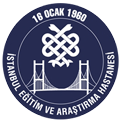ABSTRACT
Introduction:
To evaluate the human leukocyte antigen (HLA) types of patients with vesicoureteral reflux (VUR) who underwent renal transplantation for end-stage renal disease (ESRD) to investigate for any significant association.
Methods:
This retrospective study comprised 26 patients (male, 15; female, 11) with ESRD secondary to VUR (ESRD/VUR group) who underwent renal transplantation, and 38 healthy donors (female, 24; male, 14) were randomized in the control group. The Single Specific Primer-Polymerase Chain Reaction (low resolution) method was performed for HLA typing. The statistical analyses included chi-square test and calculation of odds ratio (OR).
Results:
The median age was 25.2 years (R, 10-41) in the ESRD/VUR group and 43.9 (R, 20-76) in the control group. A statistically significant difference between HLA A and B types was not observed. The HLA DRB1*01 was significantly higher in the ESRD/VUR group than in the control group (p=0,024). The OR for the HLA DRB1*01 was 2.727. The risk of developing ESRD secondary to VUR was 2.727 times higher in the presence of the HLA DRB1*01.
Conclusion:
An association between HLA DRB1*01 and ESRD secondary to VUR was established. The HLA DRB1*01 antigen could be interpreted as a poor prognostic factor of reflux nephropathy. This finding should be supported by further studies.



